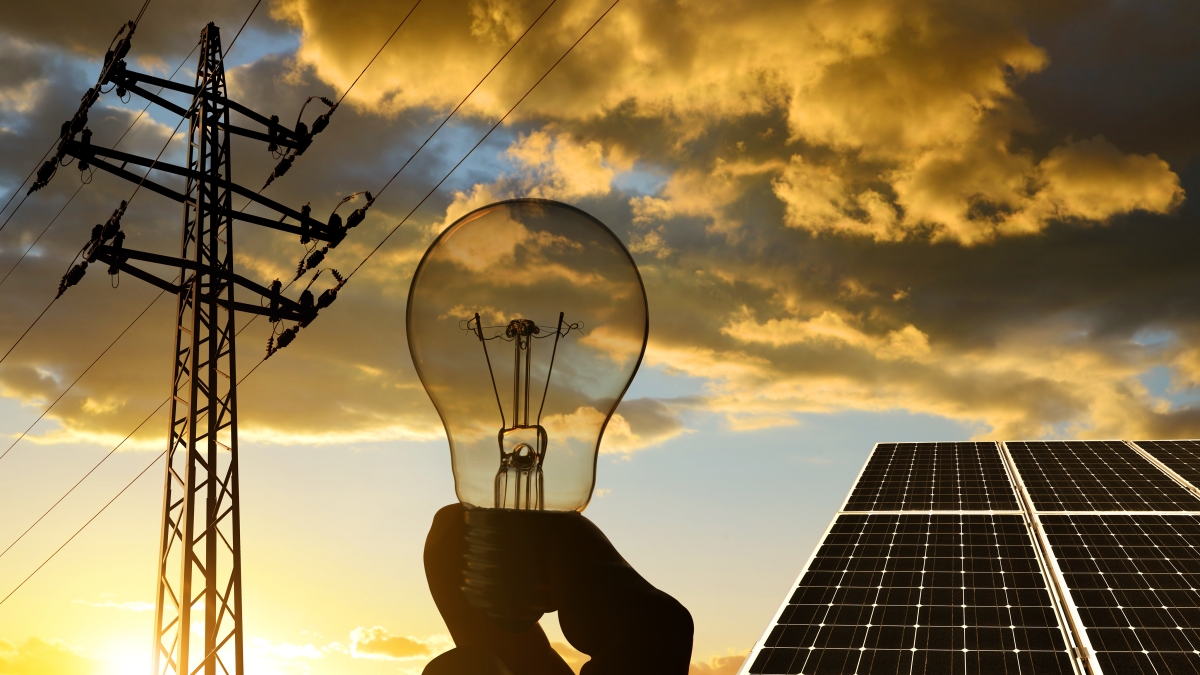ASU engineers to increase nation’s energy independence

Image courtesy of Shutterstock
Researchers at Arizona State University have been selected to receive $3.1 million from the U.S. Department of Energy’s Advanced Research Projects Agency-Energy to develop learning-ready models and control tools that will revolutionize electric distribution system operations.
“The proposed interpretable and adaptive deep learning tools will ensure the U.S. maintains a technological lead in developing and deploying advanced energy technologies,” said Anamitra Pal, a co-principal investigator on the project and an assistant professor of electrical engineering in ASU’s Ira A. Fulton Schools of Engineering.
Last month, the Department of Energy allocated $98 million for 40 new projects to develop transformative technologies for the nation’s energy system as part of ARPA-E’s latest funding opportunity, OPEN 2018. OPEN solicitations are an open call to scientists and engineers for technologies that span the entire scope of ARPA-E’s energy mission.
With the fourth-highest OPEN 2018 award among those given to academic intuitions, the ASU team will focus on maintaining distribution system reliability and efficiency while accommodating high penetration of distributed energy resources. Common examples of these resources include rooftop solar panels, batteries (for energy storage) and electric vehicles.
Ira A. Fulton Chair Professor Vijay Vittal will serve as the project lead with support from Professor Raja Ayyanar and Assistant Professors Anamitra Pal, Mojdeh Hedman and Yang Weng in the School of Electrical, Computer and Energy Engineering, one of the six Fulton Schools.
Although distribution systems have been around for more than a century, the real-time operation of the systems have not been significantly automated, Pal said. But the increasing penetration of distributed energy resources and transitioning of consumers into prosumers — meaning producers and consumers — and prostumers, or prosumers with storage capability, is challenging current distribution system operations.
“The general public interacts and associates most closely with the distribution system of the electric grid,” Pal said. “Therefore, if a failure permeates into the distribution system, it’ll disrupt the day-to-day operation of the individuals being catered to by the distribution system.”
To overcome such challenges, the project will focus on designing and developing sensor-rich and learning-ready distribution system models for dispatchable resources, loads and state estimation. The advancements come with many benefits for the power system and its participants, such as more affordable electricity, reduced network costs and improved reliability.
Sensor-rich and learning-ready distribution system models
The proposed work originates with the development of computationally efficient and accurate topology processing algorithms, including error-correction capability as well as load and distributed energy resources models for reliable system planning and operation.
The team will extract knowledge from the data produced by the sensors to develop an advanced distribution system state estimator that accounts for key features such as multi-phase, unbalance, distributed loading while incorporating necessary functionalities such as bad data detection and correction.
“If successful,” Pal said, “the proposed approach will transform the distribution system operation from today’s net demand supply with no or limited real-time data support to an active and market-ready real-time distributed energy resource, distribution topology and load management system using distributed sensing and measurement data.”
The team’s integrated approach to real-time management will allow for the adoption of distributed technology, such as photovoltaics and electric vehicles, Pal said.
By harnessing and leveraging the capabilities of distributed energy resources, this approach will also enhance distribution system monitoring, observability, control and reliability.
ASU researchers will work closely with the industrial energy consulting and services company Nexant Inc. and APS — Arizona Public Service Company, the state’s largest electric utility — to advance cutting-edge topology processing algorithms and produce prototype-level software tools to prepare these emerging technologies for industry adoption.
“By integrating more distributed energy resources in a distribution grid, the local grid will be sustainable and resilient, increasing the nation’s energy independence and security,” Pal said.
More Science and technology

ASU planetary scientist to be inducted into the National Academy of Sciences
The National Academy of Sciences is inducting School of Earth and Space Exploration Director Meenakshi Wadhwa into the 2023 class…

Unlocking the potential of AI for homeland security
“Can we do what we're doing now cheaper, more efficiently, more effectively?” Adam Cox, director in the Office of Strategy and…

SpaceHACK highlights student solutions to environmental challenges, digital divide
By Adrianna Nine About 250 students from around the world convened online and at Arizona State University on March 22 for the…